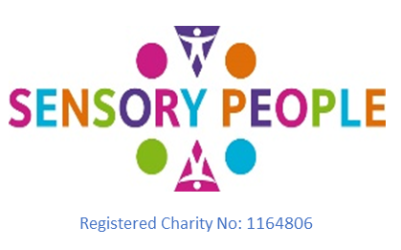a. Brain’s Wiring Connected To Sensory Processing Disorder
Researchers at UC San Francisco have found that boys and girls with sensory processing disorder (SPD) have altered pathways for brain connectivity when compared to typically developing children, and the difference predicts challenges with auditory and tactile processing.
The research, published in 2016 in the journal Frontiers in Neuroanatomy, is the biggest imaging study ever done in children with SPD. It’s also the first to compare the white matter tracts in the brain of typically developing boys and girls versus those with an SPD diagnosis.
http://www.thesensoryspectrum.com/brains-wiring-connected-to-sensory-processing-disorder/?sfns=mo
b. Learning difficulties due to poor connectivity, not specific brain regions; Science Daily, 2021
Different learning difficulties do not correspond to specific regions of the brain, as previously thought, say researchers at the university of Cambridge. Instead poor connectivity between ‘hubs’ within the brain is much more strongly related to children’s difficulties:
https://www.sciencedaily.com/releases/2020/02/200227114457.htm
c. A Path From Childhood Sensory Processing Disorder to Anxiety Disorders: The Mediating Role of Emotion Dysregulation and Adult Sensory Processing Disorder Symptoms: Frontiers in Integrative Neuroscience Journal, 2019; McMahon, Anand et al
This study sought to examine whether: (a) childhood sensory processing disorder (SPD) symptoms predict an increased probability of an anxiety disorder diagnosis in adulthood; and (b) difficulties with emotion regulation and adult SPD symptoms mediate this relationship. Results suggested that childhood SPD symptoms were significantly associated with a higher likelihood of a lifetime anxiety disorder diagnosis. Difficulties with emotion regulation fully mediated the relationship between childhood SPD and (a) any anxiety disorder in adulthood and, specifically (b) current generalized anxiety disorder (GAD). Specifically, the data indicated that high symptoms of SPD in childhood may lead to high SPD symptoms in adulthood, which then lead to high emotion dysregulation, ultimately conferring vulnerability for an anxiety disorder diagnosis. Taken together, these findings provide preliminary evidence for how sensory processing impairments in childhood may relate to anxiety through difficulties regulating emotion regulation:
https://www.frontiersin.org/articles/10.3389/fnint.2019.00022/full
d. Developing language in a developing body: the relationship between motor development and language development; The Journal of Child Language, Iverson, 2010
During the first eighteen months of life, infants acquire and refine a whole set of new motor skills that significantly change the ways in which the body moves in and interacts with the environment. In this review article, the author argues that motor acquisitions provide infants with an opportunity to practice skills relevant to language acquisition before they are needed for that purpose; and that the emergence of new motor skills changes infants’ experience with objects and people in ways that are relevant for both general communicative development and the acquisition of language. Implications of this perspective for current views of co-occurring language and motor impairments and for methodology in the field of child language research are also considered.
https://www.ncbi.nlm.nih.gov/pmc/articles/PMC2833284/
e. How the Brain Processes Sensory Information from Internal Organs; Neuroscience News, 2022
An overview of a new mouse study from Harvard Medical School which provides clues as to how the brain processes sensory information from internal organs, revealing feedback from organs activates different clusters of neurons in the brain stem.
g. Sensory Sensitivity and its Relationship with Adult Attachment and Parenting Styles
Parenting styles vary in levels of both warmth and control, with evidence that type of parenting behavior is linked with social-emotional and other developmental outcomes for children. There are well-established associations between adult attachment and parenting styles. Given emerging evidence that people with different attachment patterns vary in how they receive and modulate sensory information, there are potential implications for parenting which have rarely received research attention. This cross-sectional study investigates the links between parenting style and parental sensory sensitivity, and the possible mediating role of parental sensory sensitivity in the relationship between adult attachment and parenting styles. Awareness of a parent’s level of sensory sensitivity, in addition to his/her attachment style, may assist in developing effective strategies to meet both the parent’s and child’s needs and support the parent-child relationship.
